Dung beetles are the coolest and most sustainable species on the planet. They recycle, upcycle, and clean up everyone else’s poop.
The Egyptians believed that dung beetles rolled the sun across the sky. And while that may be fable, the truth is that the world would be a completely different place without dung beetles.
These incredible little animals have been around for 50 million years! And they take the Africa Freak award for being the planet’s most outstanding citizen. This article will show you why.
Dung Balls? Why?
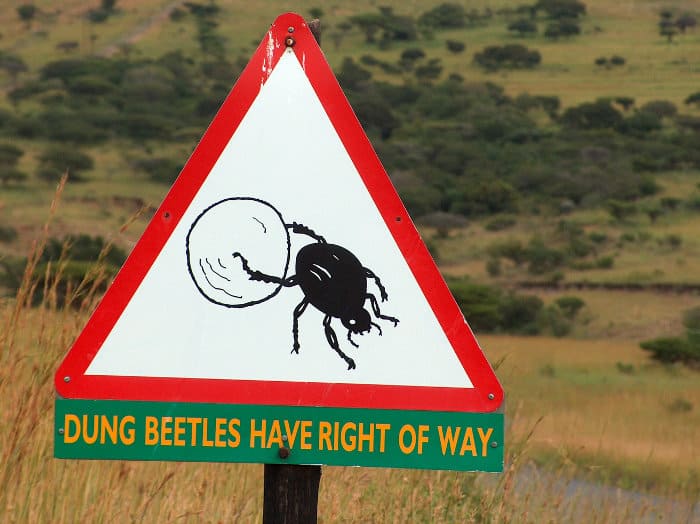
Dung beetles roll dung balls, hence their name. It is a spectacular sight, a tiny little beetle pushing around an enormous ball of dung. Why? Let us explain.
Dung beetles extract nutrients and energy from the food that other animals leave behind.
These beetles feed off poop. They like herbivore dung, as it is full of nutrients for insects. In contrast, carnivore dung holds little nutritional value. But the very best dung is produced by omnivores, animals that feed on both plants and other animals.
New research argues that dung beetles prefer the smelliest dung, including that of chimpanzees and humans. However, the research is based on a small sample of beetles so cannot be generalised.
It took mankind until 3,500 B.C. to discover the wheel. Dung beetles have known about its use for 50 million years.

The easiest way to move anything is to roll it up and make a ball. Dung is also sticky, so as the ball is rolled it keeps collecting more dung. It is a bit like building a snowman. You start with a small ball then roll the ball around the snow, thereby collecting more snow.
After rolling up a nice ball of dung, beetles pick the best breeding spot and dig a hole. They bury their ball in the ground and the female lays her eggs in the burrow.
After the eggs hatch new dung beetles can feed on the dung and restart the entire cycle.
Unfortunately, dung is never that nutritious. In just one night, a dung beetle can roll and bury dung that is 250 times heavier than itself. It needs a lot of food for its relatively small size, hence the images of tiny dung beetles rolling vast balls.
Discover the Three Kinds of Dung Beetle
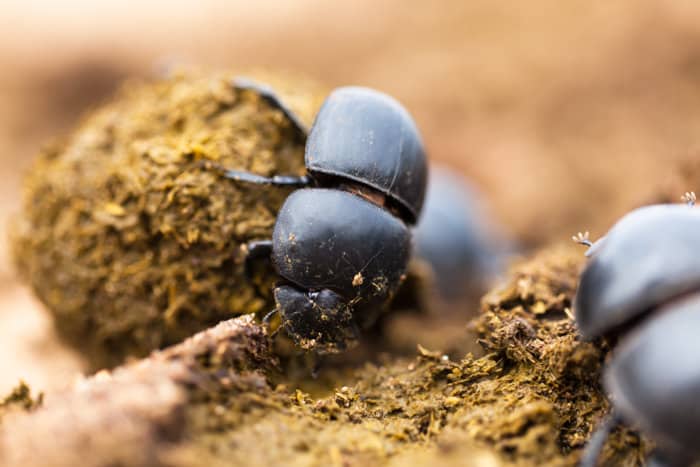
To make things more interesting, not all dung beetles roll dung. There are over 7000 different dung beetle species, each of them evolved a little differently to the next.
We don’t bore you with the details of 7000 insects, there really is only so much dung people can take. But do take note of the three different dung beetle specialisms.
Rollers
The most iconic group, rollers are the beetles who actually roll dung into balls.
They are incredibly picky about where they live and raise their young, so they will roll the dung up to 200 metres before burying it in the ground. That doesn’t sound very far, so remember that dung beetles are only 1-5 cm, which makes 200 metres an expedition!
Tunnellers and dwellers
Tunnellers don’t care too much for running about the desert with a pile of dung ten times their weight. Instead, they simply roll a ball and bury their dung where they find it.
A third group is known as dwellers. They simply wallow around in the dung, wherever it lies.
Then there are dung beetles that don’t eat dung. They eat decaying fruits and leaves instead, or mushrooms that spring out of the dung.
Amazingly, only 10% of dung beetles are rollers. Most are tunnellers.
What is a Dung Beetle Anyway?

These insects can live up to three years in the wild. They vary in size, from tiny microscopic insects to large 5 cm beetles that carry dung across the African deserts.
All dung beetle species have dark bodies dominated by a protective casing. This thick skin may provide protection from falls and scrapes, but it is no match for predators.
Although dung beetles are famously seen walking on the ground, like most other insects, they hide an impressive set of wings.
When a dung beetle finds danger they pop out their wings and fly away. The problem, as David Attenborough explains in this video, is that traveling head-down bottom-up is not very good for predator detection.
How to Roll a Dung Ball in Six Easy Steps
1. Smell out some choice dung (dung beetles have a great sense of smell)
2. Roll up a nice ball of dung (then escape before it is stolen by another beetle)
3. Adopt the head-down bottom-up travel position (it may seem a funny way to travel but it is very efficient)
4. Travel in a straight line to your destination
5. When encountering an obstacle, don’t go around, go over it and continue to travel straight
6. Repeat step 5 until you reach your final destination
Enjoy this fun dung beetle video by Rich Laburn, and take a good look at the animal’s technique. Sometimes the dung beetle stops and climbs to the top of the ball to check its surroundings.
And it never stops. It just keeps rolling and rolling! 🙂
Most dung beetles can roll balls that weigh around 10 times their own weight. That is the equivalent of a person pushing a small car (for a very long distance).
Some have incredibly strong front legs that can propel balls weighing 50 times their weight. That is more like a person pushing a bus.
The onthophagus taurus dung beetle can move more than 1000 times its own weight. That’s the equivalent of a person pulling 70 tons of steel, or 70 tons of feathers, or six double decker buses filled to the brim with people. That makes this dung beetle the strongest animal in the world.
But how does the dung beetle know which way to go? Easy. They look to the sky, even when their head is facing down. Actually, that isn’t very easy!
Dung beetles use celestial clues like the sun and moon to navigate their path. One species has evolved to navigate on the stars, so it follows the Milky Way to its final destination.
How to Woo a Female Using a Ball of Dung
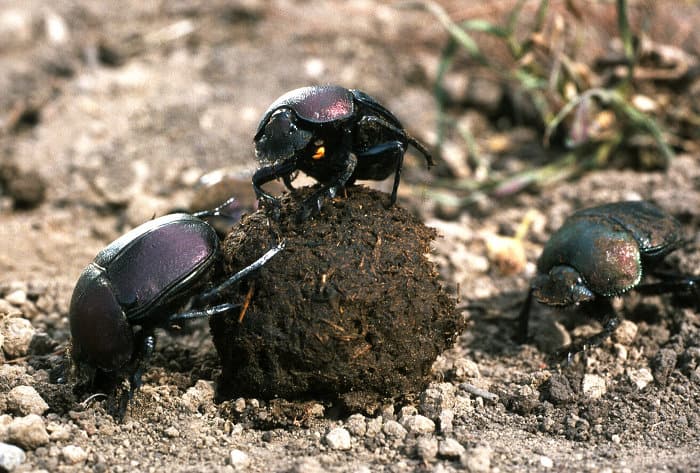
There is more than one reason for dung beetles adopting the head-down bottom-up position.
By sticking their bum in the air they can release a special pheromone, which alerts females to the lush bounty that awaits.
Females want a juicy ball of dung to lay their eggs. Most females can only lay five eggs in a lifetime, so they can be picky.
In most situations the male rolls the dung and the female follows behind. However, some females demand more. They hitchhike a ride on top of the dung ball, so the male has to push even more weight!
A strong pheromone combined with a good ball of dung attracts female dung beetles. However, some males have become crafty.
They roll a ball, dig a tunnel, stand on their heads to release the pheromone, then lure a female into their newly dug home.
But after sex the dung beetle climbs out and rolls his ball elsewhere!
Dung Beetles Change the World
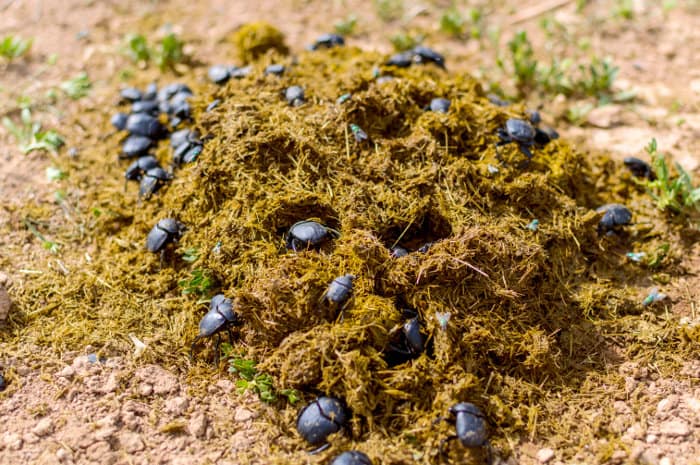
Okay, it may be interesting to read about an insect that rolls around poop and eats poop. But there is some incredible planetary science behind all this. Dung beetles change the world.
Recycling dung is essential to the health of the earth. Just like recycling waste is essential to the Earth.
- By removing and burying dung, dung beetles help to aerate the soil.
- If dung isn’t removed quickly from the earth, it smothers the vegetation and lowers its production for over a year – dung beetles prevent this from happening.
- When rolling the dung around they leave behind a trail of nutrients in the soil.
- Dung rolling and dung decomposition improves soil structure.
- Dung provides a habitat for flies and other pests that spread disease. More dung beetles equals less flies and less spread of disease, especially among animals.
- By rolling dung to new pastures, dung beetles help the spread of seeds, thereby allowing plants to germinate.
- Dung beetles eat dung and remove carbon dioxide from the face of the Earth.
- Dung beetles help to bury over 90% of the nitrogen from faeces back into the soil.
- Buried dung balls provide a rich sponge of nutrients in the soil. These are capable of storing valuable rain water and aiding plants to grow.
- By burying faeces, dung beetles make it more difficult for nasty pathogens to survive and grow.
In essence, these incredible insects remove the excrement from the earth and help to recycle all its goodness. And when there is no goodness left, they still eat the dung and keep the cycle going.
One of the biggest problems facing the Earth is that vegetation and foliage is being removed faster than it is being replenished. When people or animals take too much the earth struggles to recover.
Dung beetles solve this problem. Thanks to dung beetles, 95% of the nutrients from vegetation and foliage are returned to the soil. Animals poop out the nutrients and dung beetles ensure they go back to the soil and foliage.
In Africa, dung beetles are an essential means of nourishing poor soil. They are one of the most integral cogs in the natural world, outstanding planetary citizens we simply couldn’t do without.
Other Cool Facts About Dung Beetles

1. Dung beetles have specially insulated feet that allow them to walk on incredibly hot landscapes, such as the Kalahari Desert.
2. For further refuge from the heat, dung beetles will use their dung balls as a form of shade.
3. The ancient Egyptians called dung beetles scarabs, and worshipped them reverently.
4. In Ancient Egypt they believed that these scarabs rolled the sun across the sky so it could be born again the next morning.
5. After hatching from a single egg, dung beetle larvae eats its way out from the inside of the dung ball, while its parents are sustaining themselves by eating from the outside.
6. Like all animals, dung beetles require protein to grow. Instead of eating all the poo they find, they select the tiniest particles, where the most nitrogen and protein is found.
7. Dung beetle larvae isn’t intelligent enough to source the juiciest proteins, so they have special teeth that can bite through everything.
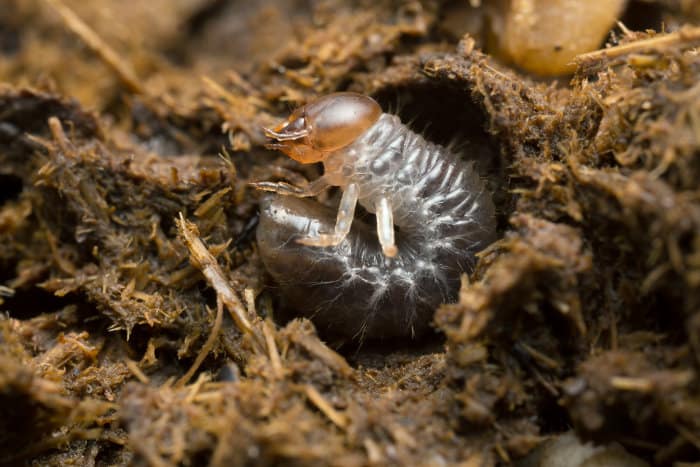
8. After eating dung, the larvae gets rid of what it can’t process, before eating it again. So it eats dung, excretes part of it, then eats it again.
9. Tunnelling male dung beetles display an incredible variety of weaponry, including antlers, horns, forks, tusks and prongs. They battle with other males to steal dung balls and tunnel territory.
10. Quarrels over dung are common. Some dung beetles choose to fight instead of roll, so they wait for a rival to pass and attempt to steal their dung.
Preserving a Healthy Dung Beetle Population
Imagine a planet without its most outstanding citizens! Dung beetles do a lot for the world, so let’s help them out.
The biggest threat to dung beetle populations is habitat destruction. Remove the natural world and dung beetles won’t be able to survive in a land of houses and roads.
Pesticides are another major threat. Most pesticides kill dung beetles, which in turn impacts the quality of the soil, so their use is completely counterproductive.
Dung beetles are helping to keep our planet clean. So spread the word about this poo-loving insect. Everybody needs to know how important these animals can be.
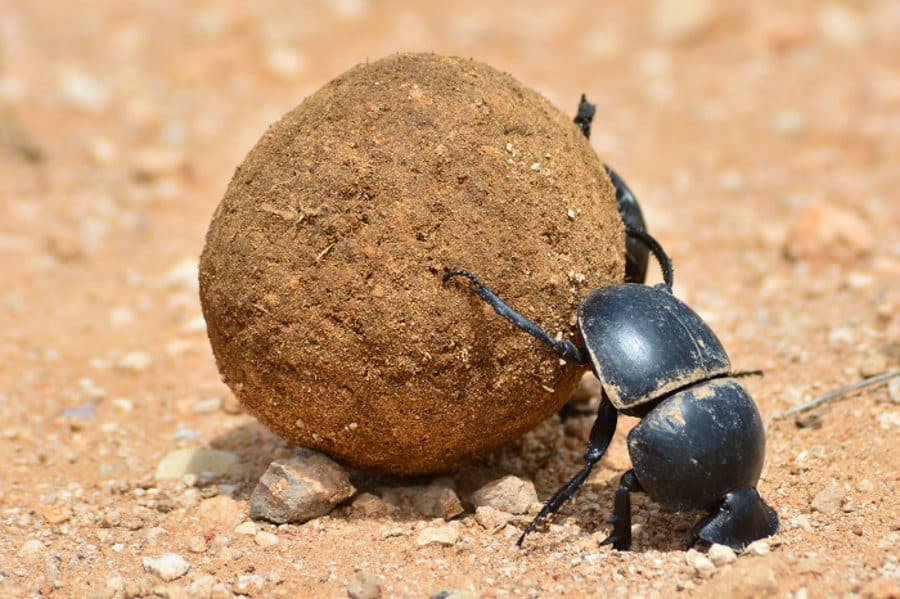
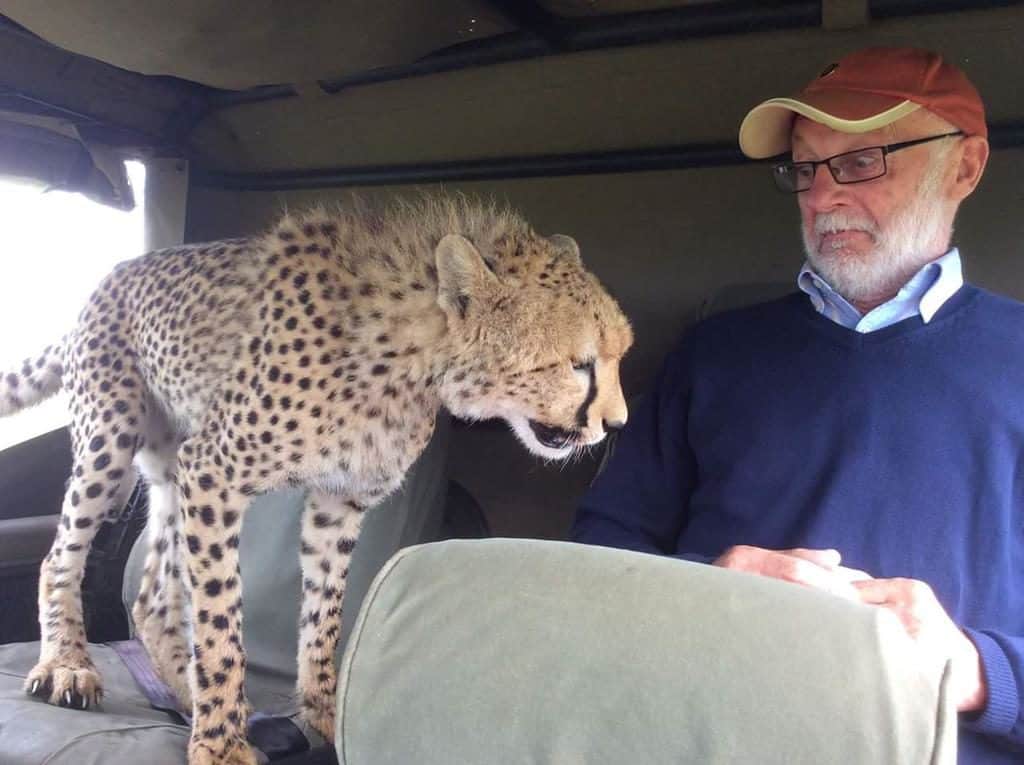
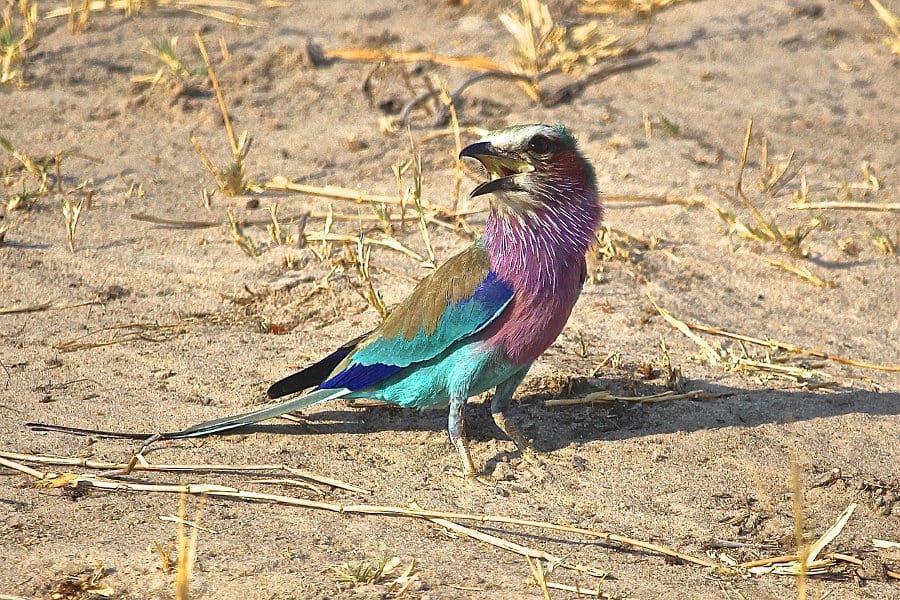
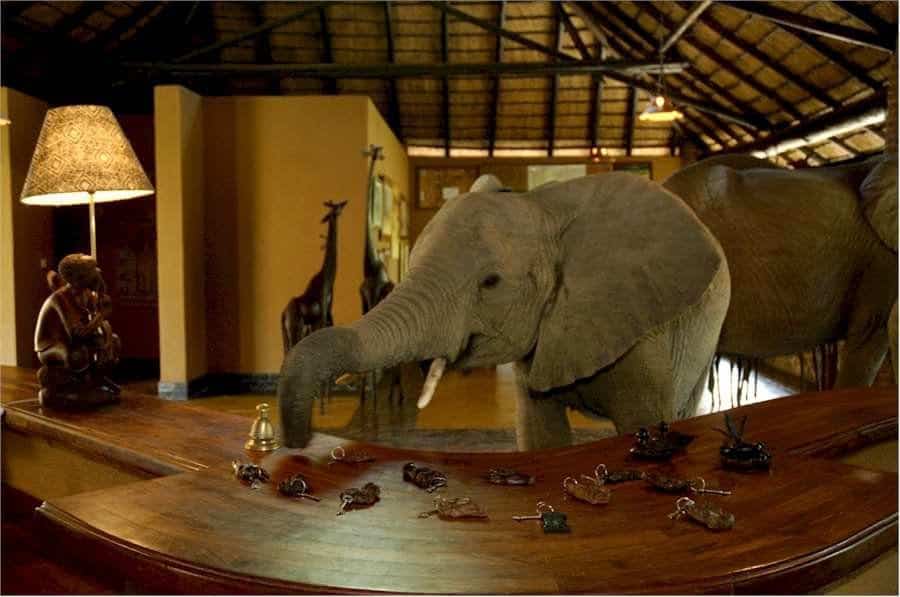
It was hilarious to watch! Thanks for including it above–glad you enjoyed it!
Dung beetles are extremely interesting to see in their natural habitat! While on a South Africa safari tour, we saw two dung beetles racing each other as they rolled two (quite large) balls of dung across the road. We caught it on video, which you can see on our YouTube channel (HillsofAfrica).
Hey Sandy,
Saw it previously on facebook, it is absolutely hilarious. Have included it below! Thanks! 😉
http://www.youtube.com/watch?v=_xPGtZqZAxw